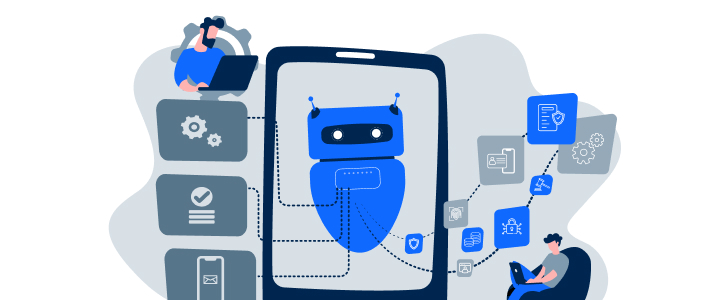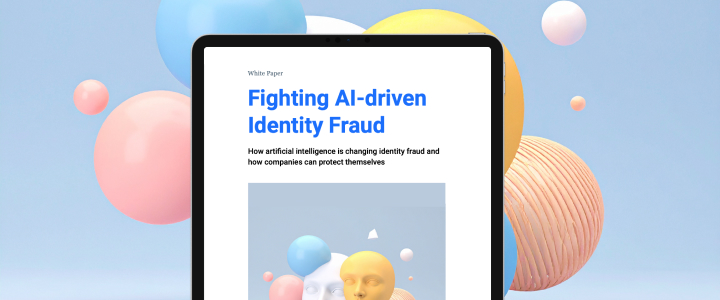“Digital first” and “user last”?
“Digital first” does not mean “technology first”. Why the most important thing is often forgotten in digital transformation projects: added value for customers.
What is “digital first”?
Before we dive into this post, let's first take a closer look at the buzzword: “Digital first.” What does that actually mean? When companies talk about “digital first” they mean that their business processes, services, or products should be primarily thought of and designed digitally. In other words, with a “digital first” strategy, companies rely on digital operating models and focus on suitable technologies and software solutions as part of all business thrusts.
The goal of a “digital first” strategy from the company's point of view
As a rule, “digital first” approaches therefore pursue the goal of simplifying business processes, gaining market share, and strengthening the company's own competitiveness. However, this is often easier said than done – especially in the case of complex business strategies, the solutions of different fields of action must be integrated with each other and synergies created.
“Technology first” instead of “user first”?
Especially when complexity is high, “digital first” quickly becomes “technology first” in the reality of transformation processes. In this case, the “digital first” mindset often looks like this: It doesn't matter if the technology helps the user, the main thing is that the systems run. In this way, there is a great balancing act between keeping pace with the latest innovations, corporate market goals, and what the user actually wants.
Silos in digital transformation
Experts in IT who drive the integration of system landscapes and shape digital transformation processes often have little in common with experts in marketing, UX, or digital experience, and vice versa. Platforms and products may unite the best technologies, but the customer view, target group, and market goals have moved out of focus. This is more often the rule than the exception in digital transformation processes. And so silos are created from IT landscapes that work in the best case – but are rarely made for the customer.
The goal of a “digital first” strategy from the customer's point of view
“Digital first” does not replace “user first,” but one actually means the other. Today, users surf through all digital channels with unconditional freedom, and in doing so, they don't linger anywhere – for anyone or anything. Companies need to jump on the wave and surf along. Be digital. Be present. Be with the users. And technology has to support that. That is the real “digital first”.
“Digital First” means high availability and customer proximity
Companies must learn to accept that even with the best technology, they no longer generate customer loyalty. Instead, the advent of new technologies has revolutionized the way companies (must) interact with their customers, and especially the other way around: how customers interact with companies. Communicative content, services, or products must be where the customer wants them to be at all times. Brandt and Henning (2002) explain that consumers today never look for answers or solutions in just one place. They jump from one place to another. And they do so with a passion for disloyalty.
User first, technology second
The “digital first” strategy must be: User first, technology second. Otherwise, set yourself up for scenarios like this: If you as a company invest in an ingenious app, your customers may still dump you short and sweet for an informative website. Live with it. Once you understand that users are at the center, not technology, they'll get over it. And rethink the customer perspective of their strategy.
“Digital First” changes the customer relationship
Hand on heart: if you're a customer, you honestly don't care how a company organizes its system landscapes. What you want is a simple, straightforward way to get the information you need. And on your terms. Customers are no longer just passive consumers; they actively help shape markets, brands and products. The customer, the king or queen of the wave riders, decides who will ride with him or her in the future, and who will drown. Not (at least not primarily) the technology. Its task is quickly explained: to offer customers the experience of a lifetime at every touchpoint. Customer loyalty no longer knows monogamy and is certainly not exclusive. Companies don't need to retain their customers with digital solutions – they need to seduce them with digital experiences. Touchpoint by touchpoint.
“Digital First” means creating added value for users
From this perspective, “digital first” means that marketing models and channels to customers must be questioned. The question to ask is: Where does technology add value for customers? And – just as important – where does it not? Technology cannot seduce users, but it can help. And that's exactly its role in the “digital first” strategy. So if your company's digital initiatives still look like a patchwork quilt, perhaps the key is not to look for the best technological solutions, but to analyze the customers you ultimately want to please with this trend. Then always think of the user first when it comes to “digital first”. And only then think about the technology.





